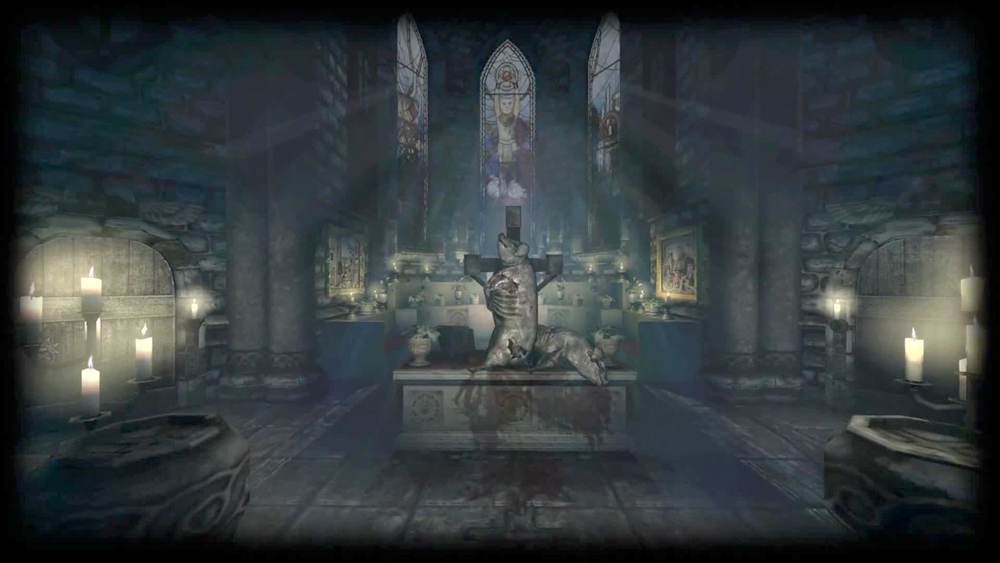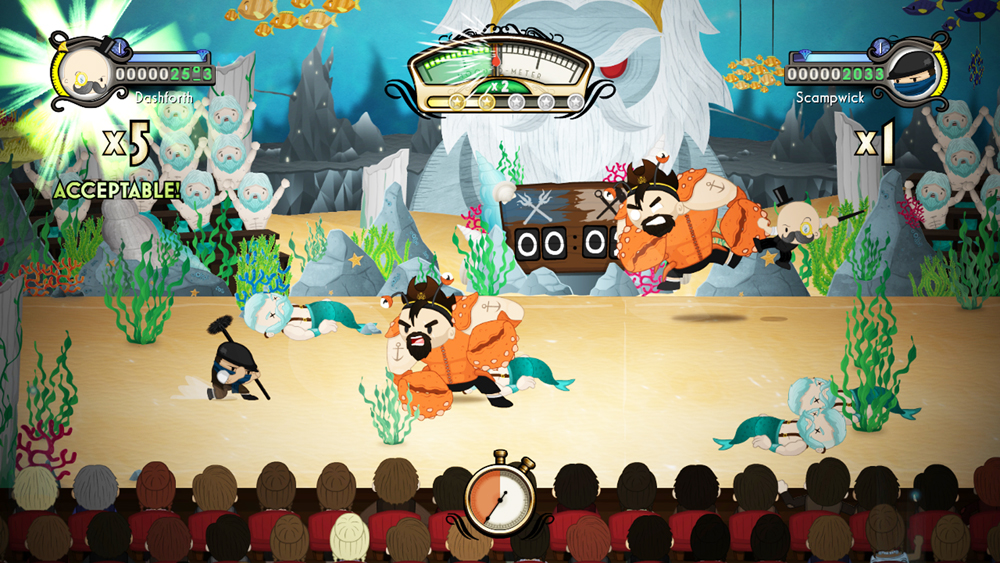You wake up inside your cage knowing that something is wrong. You have no memory of your past, but you know your children are missing. You fumble through your cavernous home in search of them, but to no avail. Your house is empty. A phone rings. The voice on the other end seems to know who you are, to know your children. The voice tells you that the machine, the labyrinthine machine beneath your house, the machine that you built, has been sabotaged, and that you must set it right, for your children are trapped amongst its many snaking pipes and oil-slicked cogs. That’s how your night starts in Amnesia: A Machine for Pigs.
It only gets worse from there.
As you delve deeper into the bowels of the machine, you gradually uncover not only the story of its origin, but your own as well. The story in Machine for Pigs is told through a combination of journal entries, found recordings and hallucinations. The voice acting is consistently stellar. Whether your character, Mandus, is sniveling and terrified or questioning the man on the phone, the dialogue is pitch-perfect. That’s likely due in large part to the script, which is fantastic. Even the journal entries, which are not voiced, have a believable sneering, malevolent and surprisingly intelligent quality to them that I’ve yet to see matched in another game. The writing in the Machine for Pigs goes a long way towards maintaining the hopeless, desperate tone of the game.
Machine for Pigs is the follow-up to the wildly successful survival horror game Amnesia: The Dark Descent. While The Dark Descent was developed by Frictional Games, Machine for Pigs was developed by The Chinese Room, a video game development studio best known for its Half-Life 2 mods Dear Esther and Korsakovia. Dear Esther, in particular, garnered praise for its atmospheric, story-driven focus. While the story in Machine for Pigs certainly lives up to The Chinese Room’s pedigree, it seems the team might have overreached in the graphics department.
There are instances where Machine for Pigs ends up looking like the bad end of a mod, though the issue is inconsistent. Paintings, creepy as they may be the first time you encounter them, lose their horrifying quality after you’ve seen them for the tenth time. Pig carcasses that are strewn throughout the world look real enough, but any examples of human anatomy you happen upon looks to have been cloven straight from 2006. Disappointing or at times comical character models that suck the life out of what should be a horrific situation are not uncommon.
You could be forgiven if you didn’t notice Machine for Pigs’ sometimes lackluster graphics. You do, after all, spend most of the game in oppressively dark environments, your only light source being a lantern. The lantern has changed significantly since The Dark Descent. Gone is the need to scour the environment for tinderboxes to keep your light stoked. The lantern in Machine for Pigs is electric, meaning that it is never in danger of being extinguished. Like in The Dark Descent, enemies are alerted to your presence if they catch sight of your light. New, though, is the flickering of your lantern when enemies draw near. The Pavlovian response is ingrained immediately and is deftly exploited for the duration of the game, with false alarms abounding. This, compounded with the expert writing and sound design, makes for scares that are more cerebral than those found in The Dark Descent, but rarely as pulse-pounding.
There are times when it feels like Machine for Pigs is more concerned with making believable false alarms than actually putting the player in any form of prolonged danger. You are occasionally tasked with stealthily navigating an area patrolled by enemies or running from a pursuer, but those situations are not only few and far in-between, but also resolved quickly. Part of the terror inherent in The Dark Descent was the constant fear of happening upon a roving enemy, from whom you would need to flee and hopefully lose by hiding in a wardrobe or crouching in the dark. Machine for Pigs enemy encounters are stately puzzles in comparison, announced by the flickering of your lantern and concluded by the close of a level. One boss encounter, built up through significant narrative and visual foreshadowing, was surmounted so easily that I wondered why it had even been included at all.
The problems with Machine for Pigs lie mostly in hindsight. It’s hard to see where the patchwork comes apart when you’re playing the game, as it’s all hidden so cleverly. While playing, I was hungry for the next journal entry or scripted hallucination. Even though I found most of the plot points predictable, I savored how they were served up. An Amnesia game by The Chinese Room is a fascinating beast. The game lives up to the developer’s penchant for making moody, atmospheric worlds and falls flat on its face in regard to survival horror gameplay. Machine for Pigs is a game that’s at its best when slowly worming its way under your skin, and at its worst when trying to live up to the frenetic tone of its predecessor.






